Code
HCS12258
Weight
200 gm / 0.44 lbs
Size
Height
58cm (23") Width
44cm (17") Material
Thangka Canvas
Availability
Available
Date Added
2016-07-05 12:06:38
Note : We used to sell this product 9 years ago so it may no longer be in our stock.
It is possible that we still have it with our suppliers but the price could be different from before.
Feel free to order. We will verify availability and inform you promptly.
It is possible that we still have it with our suppliers but the price could be different from before.
Feel free to order. We will verify availability and inform you promptly.

Safe Payment
We accept Paypal, Money Transfer, Bank Transfer
Confidence
Protection covers your purchase and personal data.
Worldwide Delivery
We ship Worldwide, except Russia.Shipping cost US$25.2 for upto 0.5 kgs

Hotline
Talk to help line for your question on 9841267335Introduction to Thangka
A thangka, also known as tangka, thanka, or tanka, is a vibrant and intricate Tibetan Buddhist painting that serves as a visual representation of spiritual teachings. Crafted with meticulous detail on cotton or silk appliqué, thangkas depict a wide range of subjects including Buddhist deities, sacred scenes, mandalas, and narrative stories. These sacred artworks are traditionally kept unframed and rolled up for storage, resembling ancient scrolls. To protect their delicate nature, thangkas are mounted on textile backings and often adorned with a silk cover on the front. Proper preservation in dry environments is crucial to maintain the integrity and longevity of the silk. Read More . . .
A thangka, also known as tangka, thanka, or tanka, is a vibrant and intricate Tibetan Buddhist painting that serves as a visual representation of spiritual teachings. Crafted with meticulous detail on cotton or silk appliqué, thangkas depict a wide range of subjects including Buddhist deities, sacred scenes, mandalas, and narrative stories. These sacred artworks are traditionally kept unframed and rolled up for storage, resembling ancient scrolls. To protect their delicate nature, thangkas are mounted on textile backings and often adorned with a silk cover on the front. Proper preservation in dry environments is crucial to maintain the integrity and longevity of the silk. Read More . . .
Description :
Shakyamuni Buddha appeared in this world with the sole purpose of benefitting all sentient beings. Out of great compassion Lord Buddha revealed many different means/paths to enlightenment and set forth three Wheels of Law to suit varying degrees of intelligence and receptivities.
Shakyamuni Buddha himself was, it is said, in the form of Vajradhara while he was teaching tantric path to his gifted disciples.
Vajradhara is depicted holding a Vajra and a bell in his left hand and his arms are kept crossed in front of him expressing complete integration of Prajna and Upaya. He is usually depicted in blue colour in vajraparyanka posture. He has a crown, an Urna and an Ushnisha as a Sambhogakaya Buddha. Vajradhara is also depicted in father-mother (Anju-Aji in Newari) aspect. en he holds his usual symbols while his arms are crossed at the back of his consort. the consort is none other than Prajnaparamita in deified form.
The Kargyudpa lineage of Tibetan Buddhism begins with the Buddha Vajradhara. The individual in this tradition is allowed to visualize his root Guru as Buddha Vajradhara. Guru Tilopa is said to have received Mahamudra instruction directly from Buddha Vajradhara through visions and other extraordinary means.
In Nispannayogavali, Vajradhara is the main deity in Vajrasattvamandala. He is three faced, six-armed and reddish white in color. His right arm holds a vajra, a sword and a kapala and his left hand holds a bell, an ankush and a noose. He stands in the Ardhaparyanka posture and dances in Tandava style.
Brief Introduction :Shakyamuni Buddha himself was, it is said, in the form of Vajradhara while he was teaching tantric path to his gifted disciples.
Vajradhara is depicted holding a Vajra and a bell in his left hand and his arms are kept crossed in front of him expressing complete integration of Prajna and Upaya. He is usually depicted in blue colour in vajraparyanka posture. He has a crown, an Urna and an Ushnisha as a Sambhogakaya Buddha. Vajradhara is also depicted in father-mother (Anju-Aji in Newari) aspect. en he holds his usual symbols while his arms are crossed at the back of his consort. the consort is none other than Prajnaparamita in deified form.
The Kargyudpa lineage of Tibetan Buddhism begins with the Buddha Vajradhara. The individual in this tradition is allowed to visualize his root Guru as Buddha Vajradhara. Guru Tilopa is said to have received Mahamudra instruction directly from Buddha Vajradhara through visions and other extraordinary means.
In Nispannayogavali, Vajradhara is the main deity in Vajrasattvamandala. He is three faced, six-armed and reddish white in color. His right arm holds a vajra, a sword and a kapala and his left hand holds a bell, an ankush and a noose. He stands in the Ardhaparyanka posture and dances in Tandava style.
This image represents the understanding & application of internal & external tantric energy, by skilfully influencing & directing energies arising from everyday experiences [Skt. dharmas]. Vajradhara expresses not just the awoken mind but the direction of understanding which develops into a transcendent experience of the Dharmakaya. This is symbolised by the lightening [Skt. vajra] headed bell [Skt. ghanta] which represents the feminine creative wisdom and the double ended lightening sceptre representing 'energy', method & the masculine. Vajradhara personifies the ways [bell] & means [lightening sceptre] to objectively transform experience beyond everyday conception of space & time.
Dharmakaya is often taken to mean the 'truth body' & is one of the three Forms of or realms of understanding [Skt. Trikaya]. The Principle of Non-Duality i.e. the 'union of two' is represented in the Bell [Skt. Ghanta] & the Lightning sceptre [Skt. Vajra]. The bell embodies female wisdom & the Diamond Sceptre being compassion or method. The truth body of Vajradhara and Vajrayana tools will empower your journey in all places. This involves unlocking the mysteries or obscuration's of the material & inner world through methods of tantric practice & understanding. In fact Vajradhara represents latent power of transformation using tantric through wisdom to allow us to uncover Great Bliss. Vajradhara the realised way of method. Since Vajradhara personifies the essence of non dualitic union the figure represents a mastery of the symbols portrayed in other tantric deities & having understood their meaning does not need to bear them.
Iconography :Dharmakaya is often taken to mean the 'truth body' & is one of the three Forms of or realms of understanding [Skt. Trikaya]. The Principle of Non-Duality i.e. the 'union of two' is represented in the Bell [Skt. Ghanta] & the Lightning sceptre [Skt. Vajra]. The bell embodies female wisdom & the Diamond Sceptre being compassion or method. The truth body of Vajradhara and Vajrayana tools will empower your journey in all places. This involves unlocking the mysteries or obscuration's of the material & inner world through methods of tantric practice & understanding. In fact Vajradhara represents latent power of transformation using tantric through wisdom to allow us to uncover Great Bliss. Vajradhara the realised way of method. Since Vajradhara personifies the essence of non dualitic union the figure represents a mastery of the symbols portrayed in other tantric deities & having understood their meaning does not need to bear them.
The name Vajradhara means the bearer of the lightning sceptre. The inherent tradition of lightning representing transformation & energy originates 2,500 c. BCE. The term Vajra is a typical Sanskrit word being a composite of va- meaning to bear or carry, ja or ja whose syllable denotes the energy & ra meaning to rise, overcome or power. The vajra sceptre is a special object embodies the principle of change. Conjoined prongs at each end denote lightning bolts and their being conjoined denotes latent self reacting energy. In effect as important to Buddhism as the Cross to Christianity. The Vajra [Tib. Dorje] has four prongs enclosing a fifth central prong making five in total and at both end. The tridents is another representation of the lightening more associated with Hinduism. Varjadhara's arms are crossed in a gesture of Victory over the Three Worlds [Skt. Triolyavijaya mudra also called Skt. Vajrahumkara],with reference to the syllable 'Hum', & is seated in the lotus seat [Skt. Padmasana] The lotus seat & the crossed arms mudra are together called the Skt. Vajrasana or Position of transcendent change. The white sash draped across Vajradharas chest represents the purity and essence of the varjayana school of Buddhism. In fact Mahayana & Hinayana both arise from the ancient Vajrayana tradition of personal transformation.
Commentary : Vajradhara is one of two primeval [Skt. Adi] Buddhas associated with the Trikaya Doctrine. The Sanskrit stem Tri means three & the word Kaya means body in the sense of form. Samantabhadra & Vajradhara, Bodhisattvas & mankind all exist within the primary dimension called Nirmanakaya because have been conceived by the human mind and so in part manifests within time and space. Vajradhara also exists in a second dimension of emptiness realised through the understanding of the emptiness of all phenomena called Dharmakaya. Dharmakaya [Skt.] means Truth Body or Reality Body. Dharmas are phenomena in this universe such as candles, televisions, planets, cows and significantly the laws governing them. The principle of Dharmakaya is that there is no individuality at all as nothing exists on its own and all is transient. The idea is that in fact they are temporary arrangements of emptiness. Thus Dharmakaya is ultimate truth of the unreal nature of all things and that truth is in fact nothing of emptiness. The concept of emptiness helps us break our attachment or dependency on the physical world and free ourselves from cyclical existence.
Dharmakaya represents the inconceivable [Skt. Acintya] aspect of a Buddha out of which Buddhas and indeed all phenomena [Skt. Dharmas] arise and to which they return after their dissolution. The principle of Dharmakaya helps us free ourselves from material bondage & dependency on the material world to take us towards Individual & Universal Bliss which is the union of Great Love and great Freedom. The Five Transcendent Buddhas [Skt. Dhyani Buddhas] arose from the Vajradhara, Adi Buddha,& Samantabhadra. As we detach ourselves we are able to create the Sambhogakaya state of Great Bliss. Some Vajrayana sutras refer to a fourth kaya dimension called Svabhavikiakaya [Skt.] meaning the self created body in the sense of self arising and self perpetuating essence embodying the three other kaya's. This alludes to the self arising self emanating and self perpetuating Thousand Petalled Lotus of Great Bliss.
Dharmakaya represents the inconceivable [Skt. Acintya] aspect of a Buddha out of which Buddhas and indeed all phenomena [Skt. Dharmas] arise and to which they return after their dissolution. The principle of Dharmakaya helps us free ourselves from material bondage & dependency on the material world to take us towards Individual & Universal Bliss which is the union of Great Love and great Freedom. The Five Transcendent Buddhas [Skt. Dhyani Buddhas] arose from the Vajradhara, Adi Buddha,& Samantabhadra. As we detach ourselves we are able to create the Sambhogakaya state of Great Bliss. Some Vajrayana sutras refer to a fourth kaya dimension called Svabhavikiakaya [Skt.] meaning the self created body in the sense of self arising and self perpetuating essence embodying the three other kaya's. This alludes to the self arising self emanating and self perpetuating Thousand Petalled Lotus of Great Bliss.














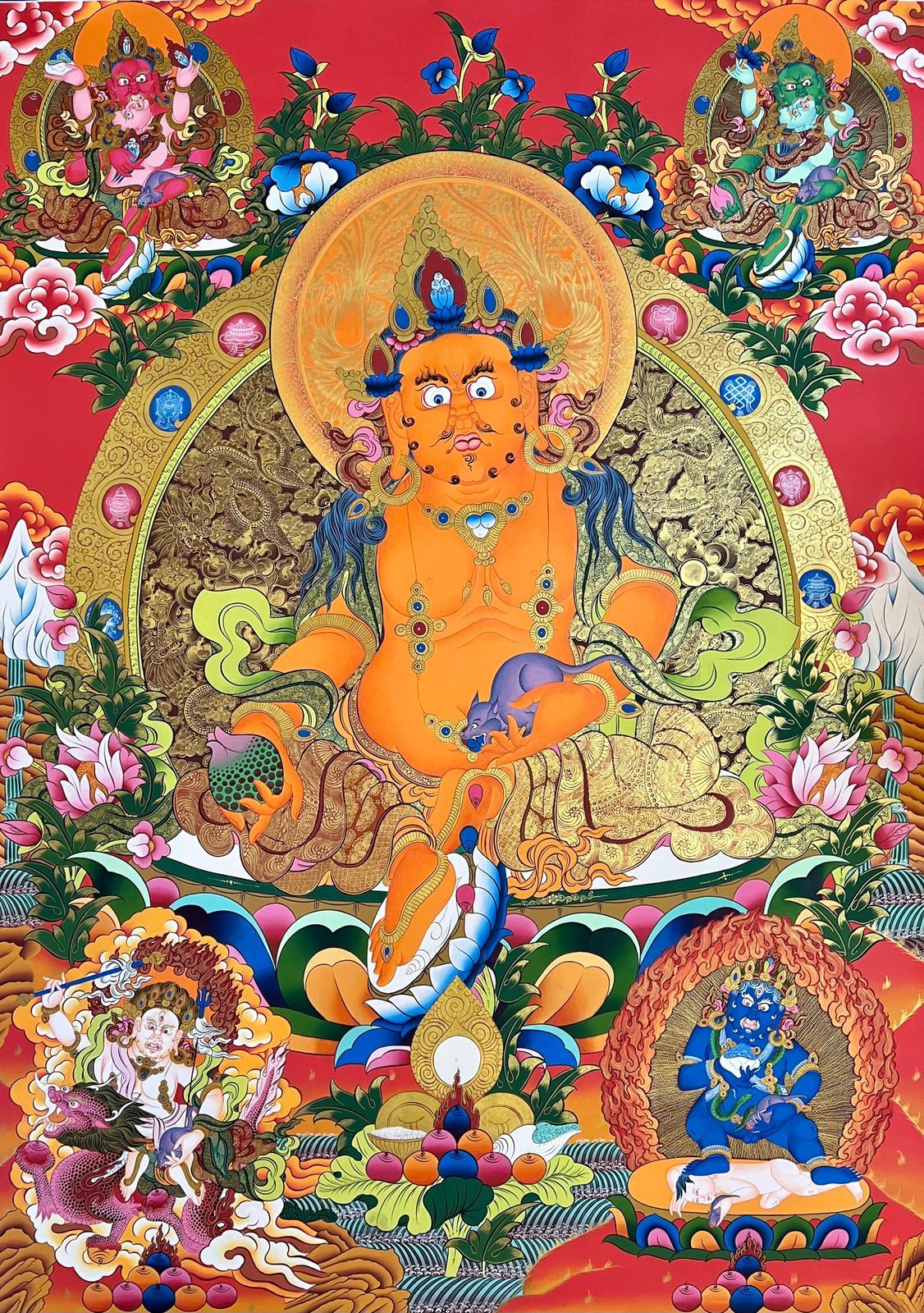 of Yellow Jambhala, Real 24k Gold,
of Yellow Jambhala, Real 24k Gold, 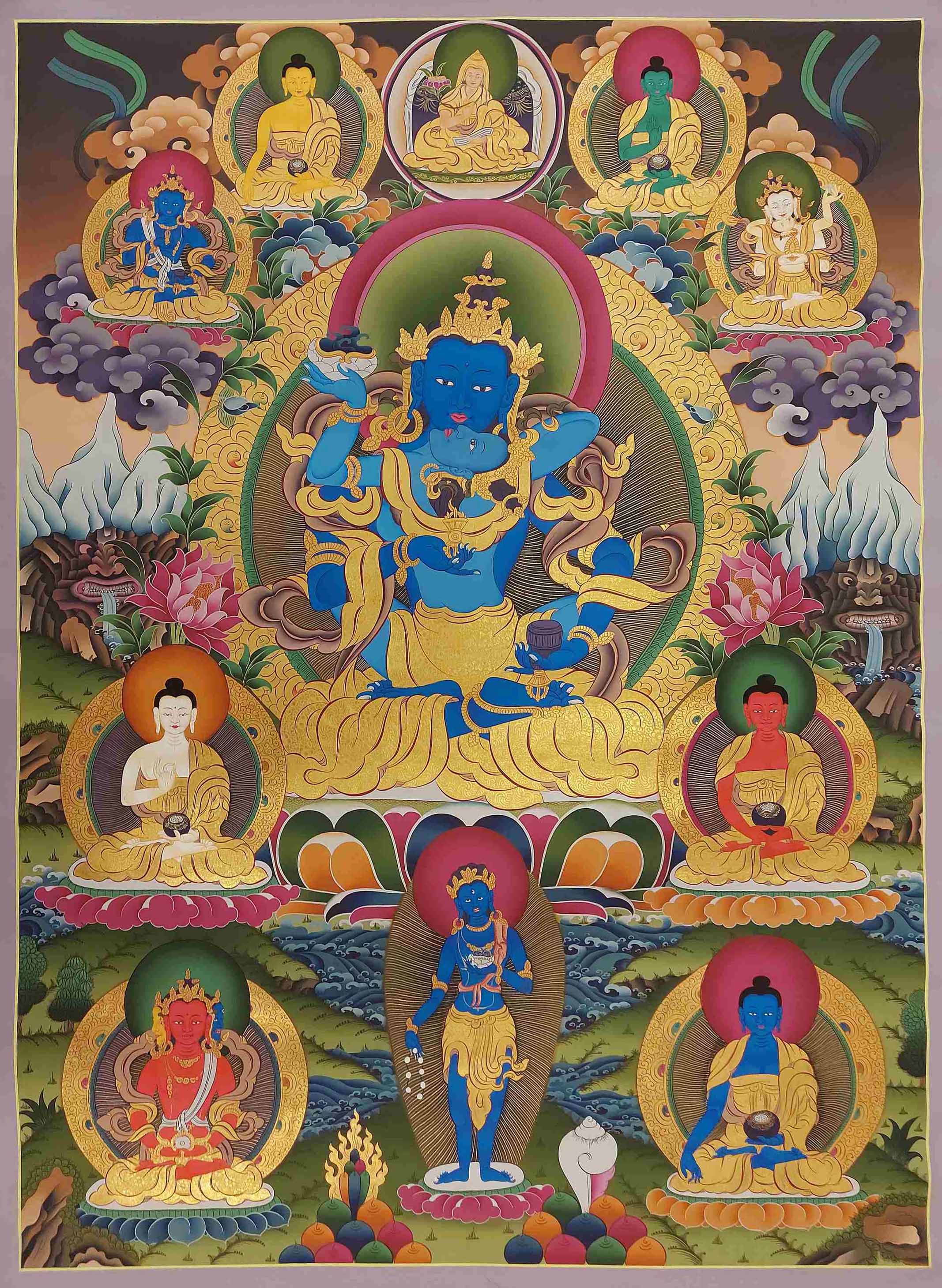 of Vajradhara
of Vajradhara 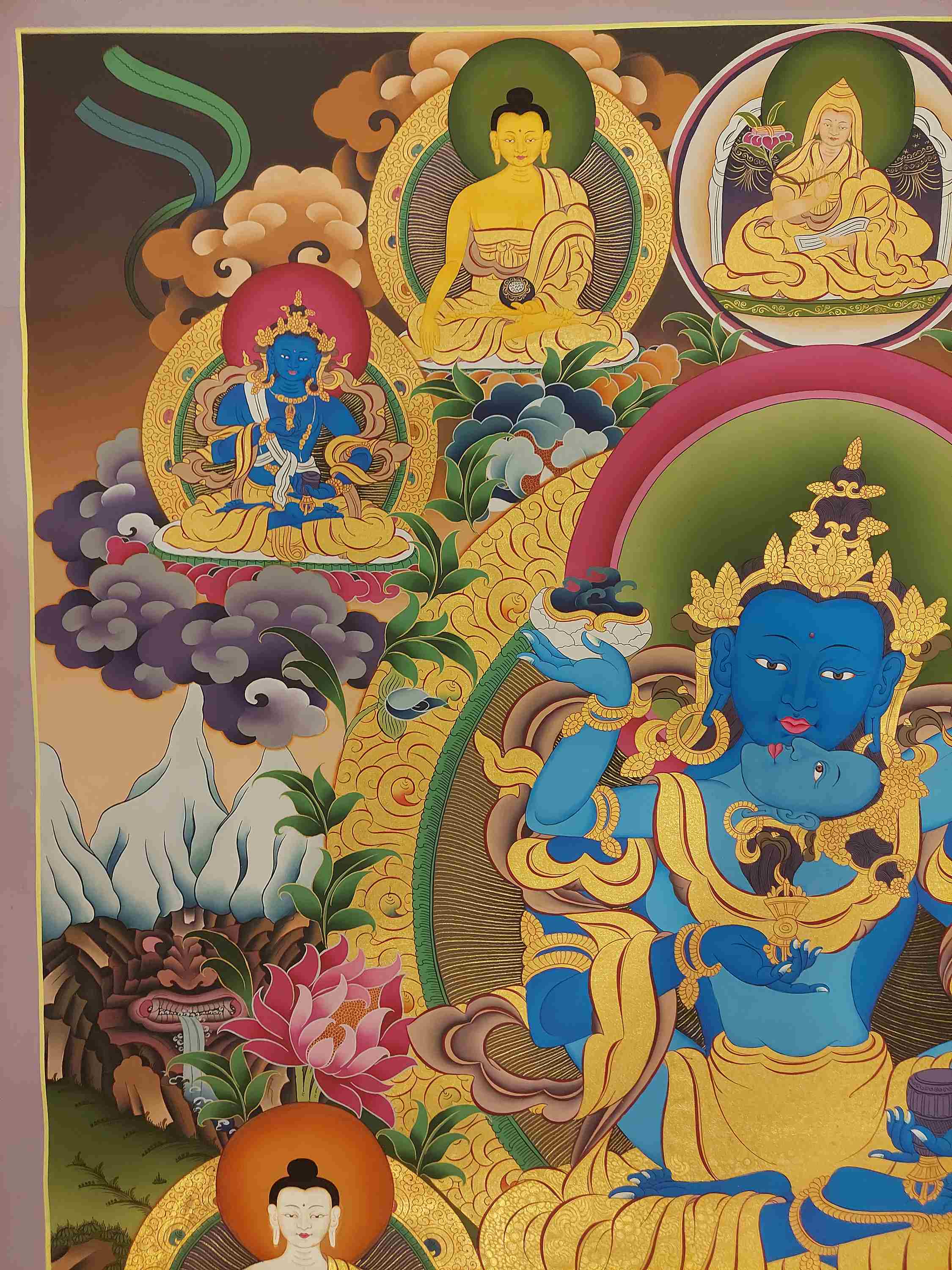 of Vajradhara
of Vajradhara 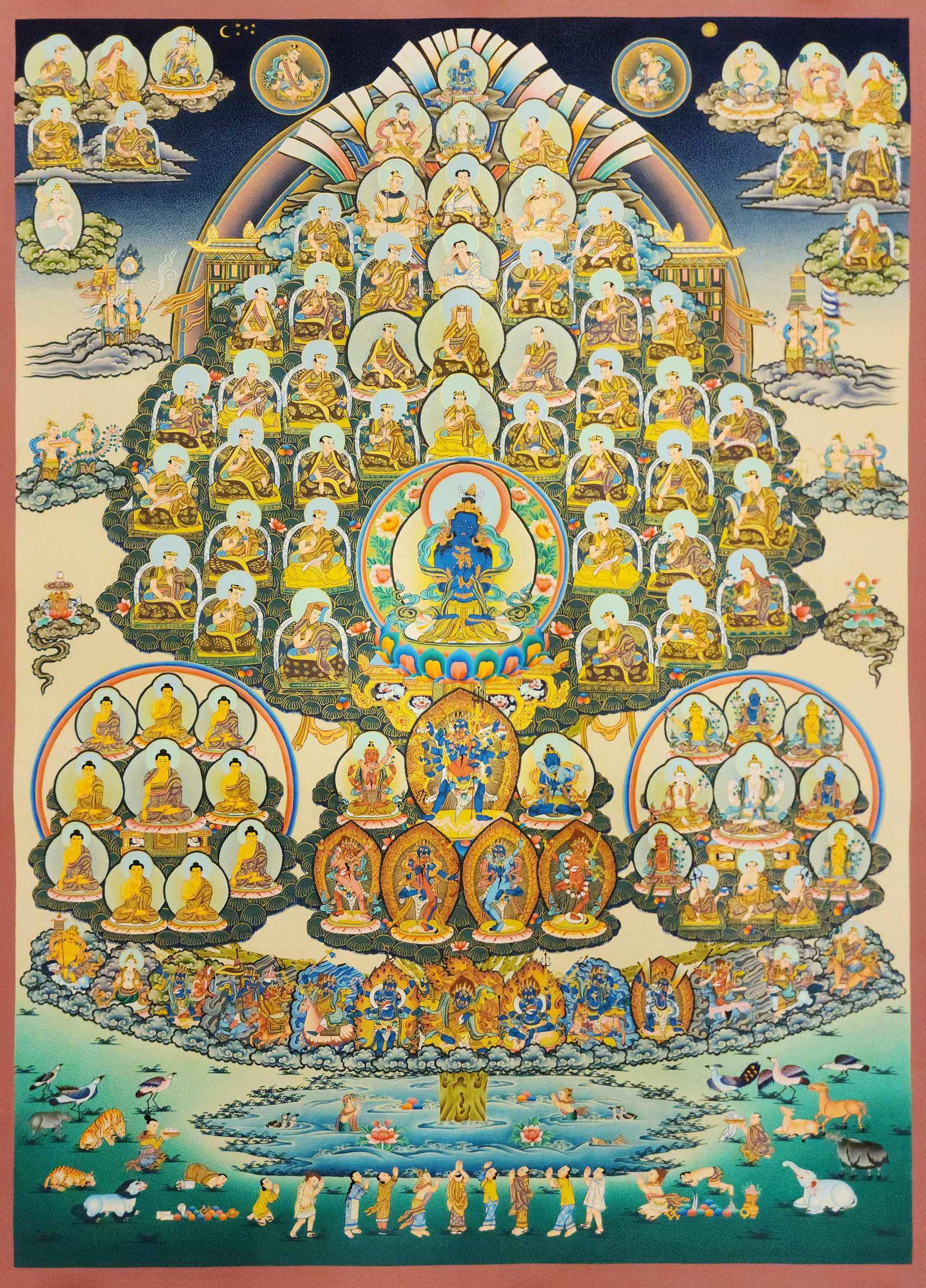 with Refuge Tree Thangka,
with Refuge Tree Thangka, 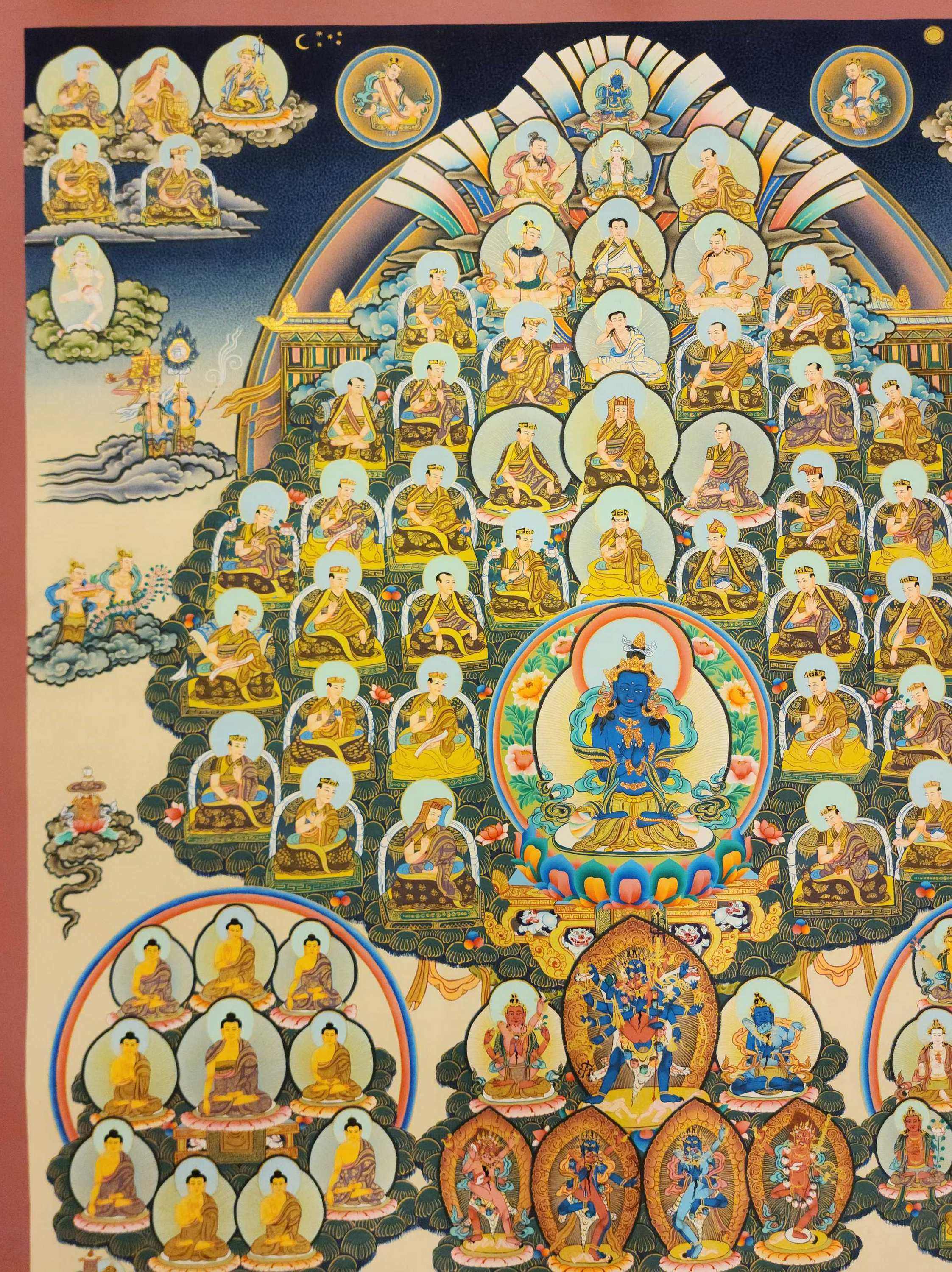 with Refuge Tree Thangka,
with Refuge Tree Thangka, 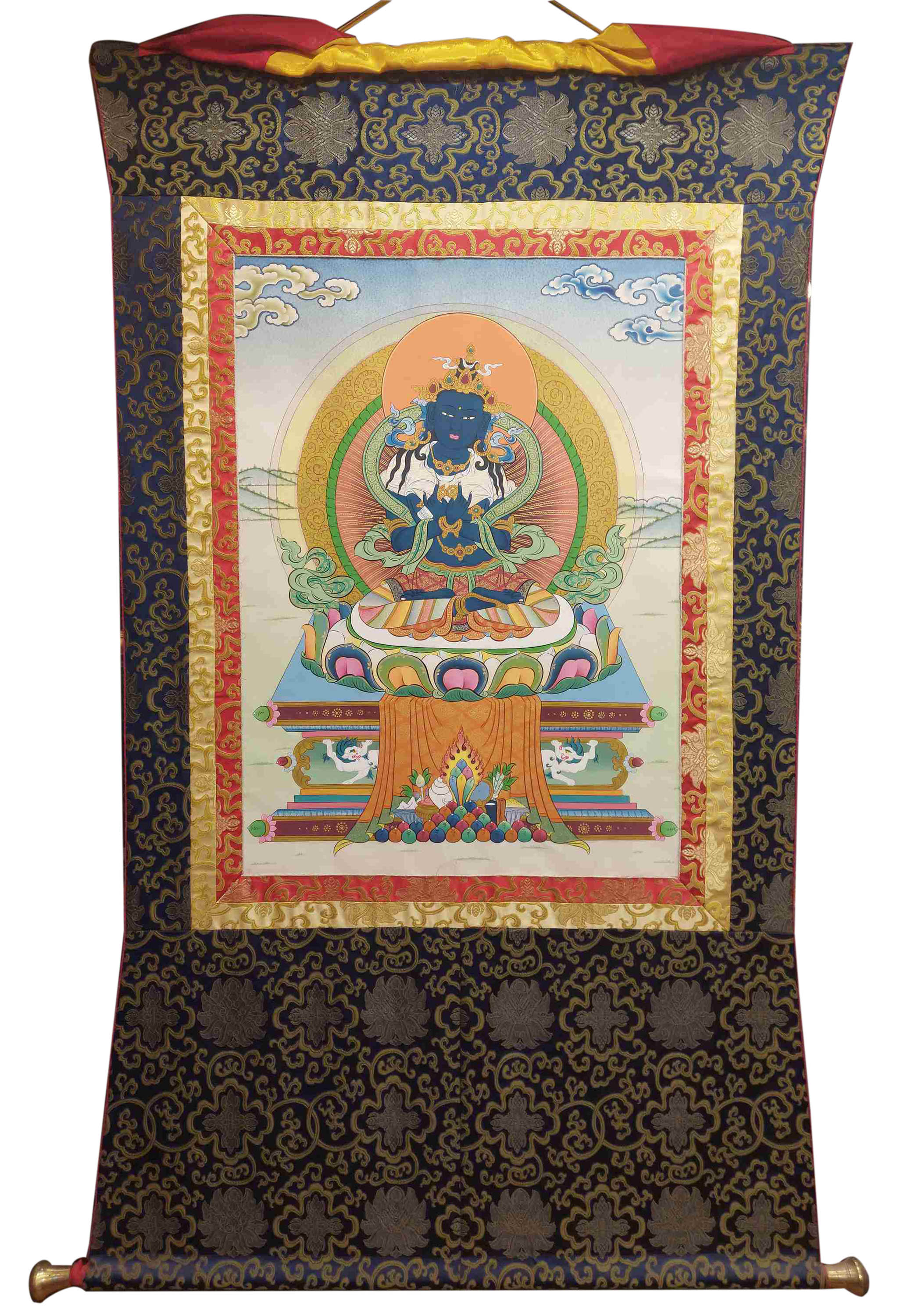 of Vajradhara,
of Vajradhara,  of Vajradhara,
of Vajradhara, 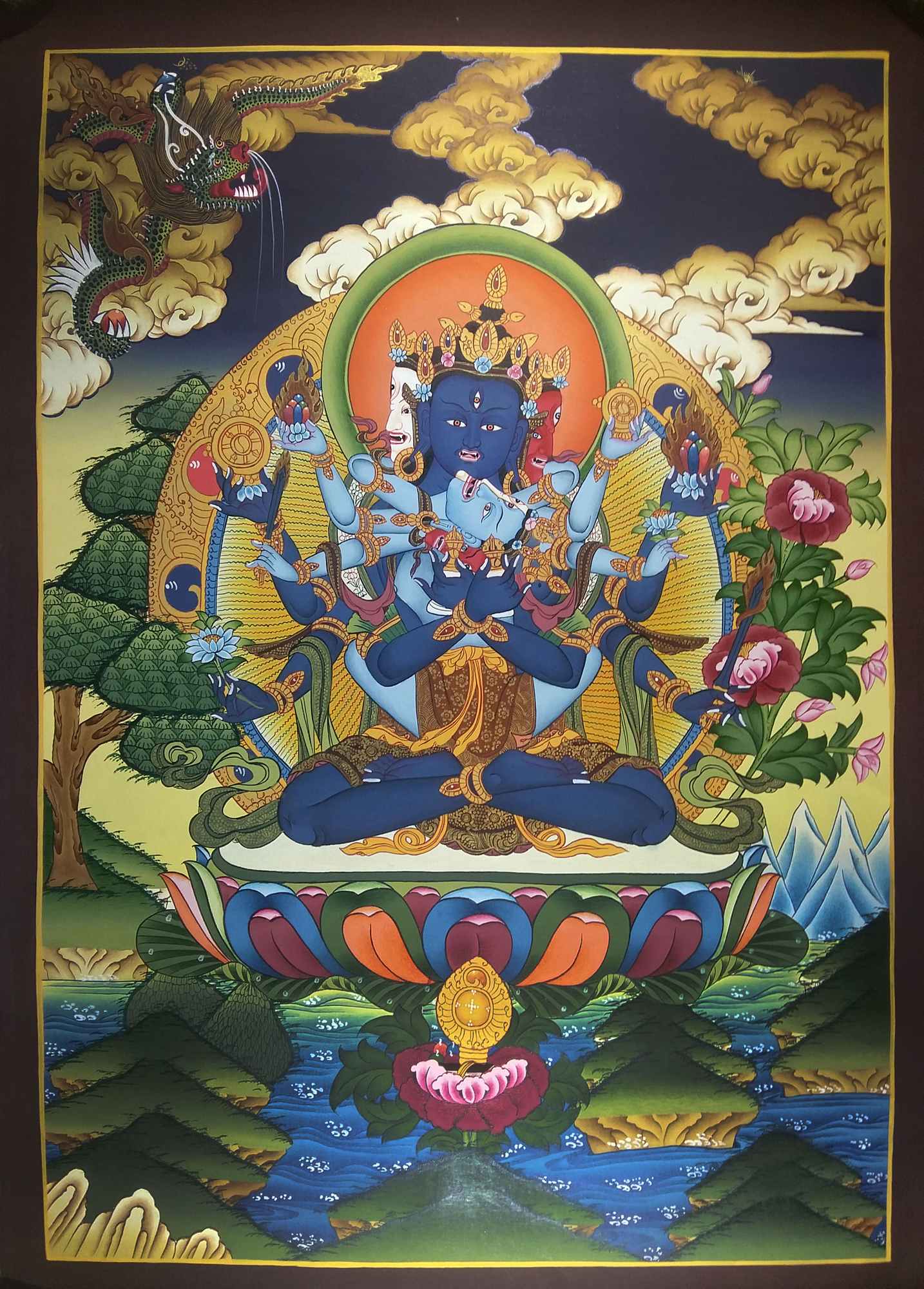 Real Gold,
Real Gold, 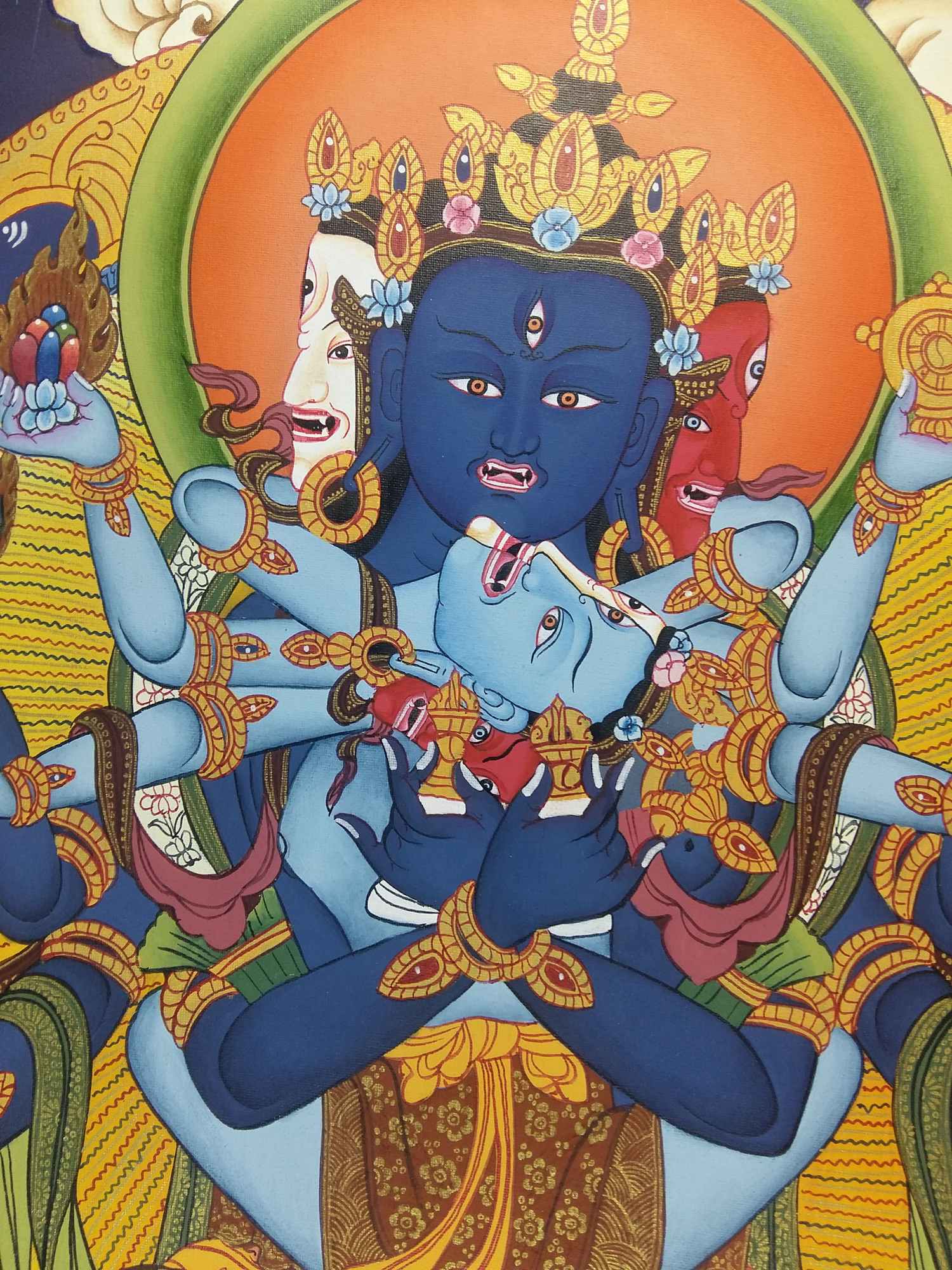 Real Gold,
Real Gold,  of Vajradhara,
of Vajradhara, 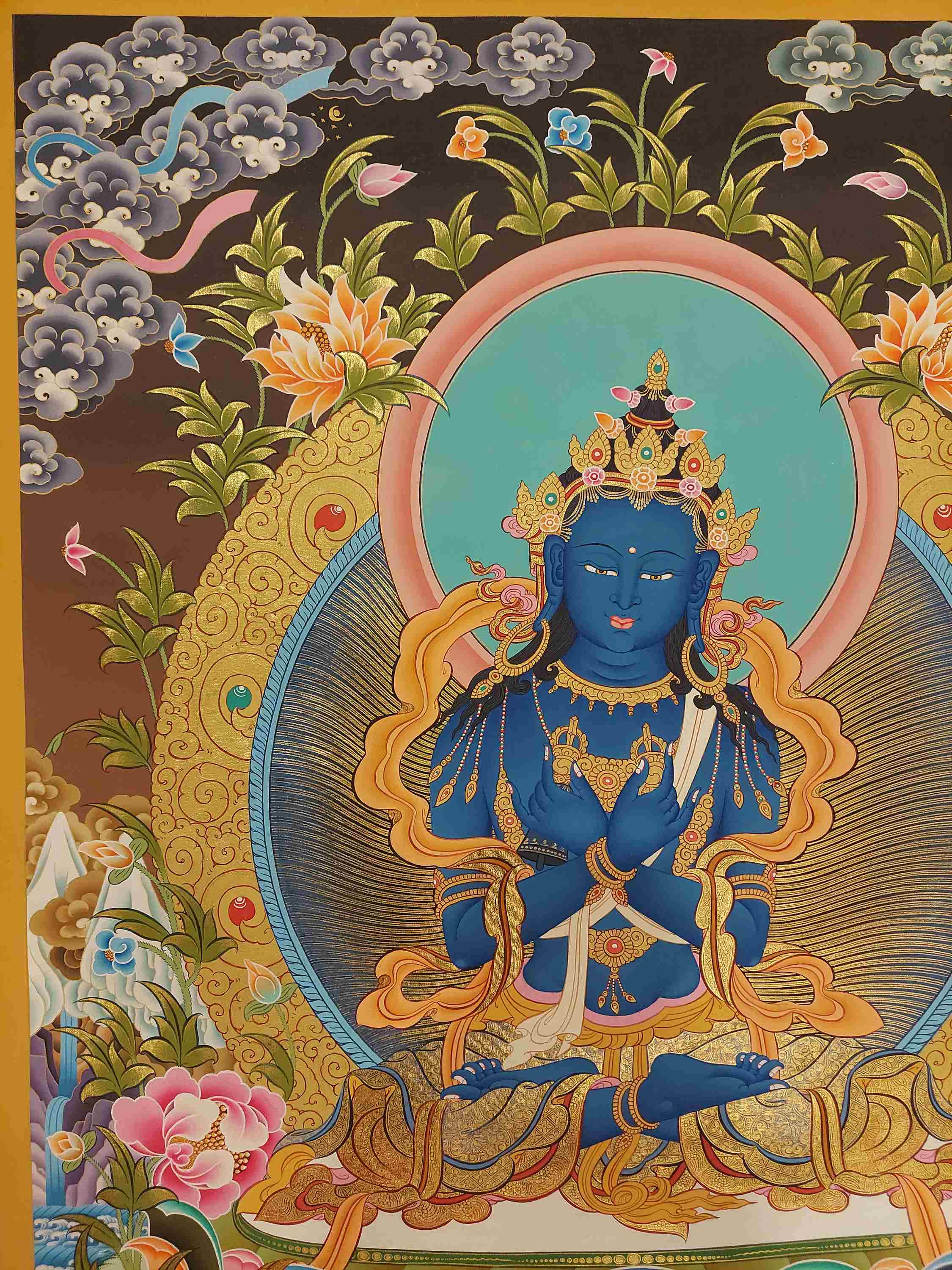 of Vajradhara,
of Vajradhara, 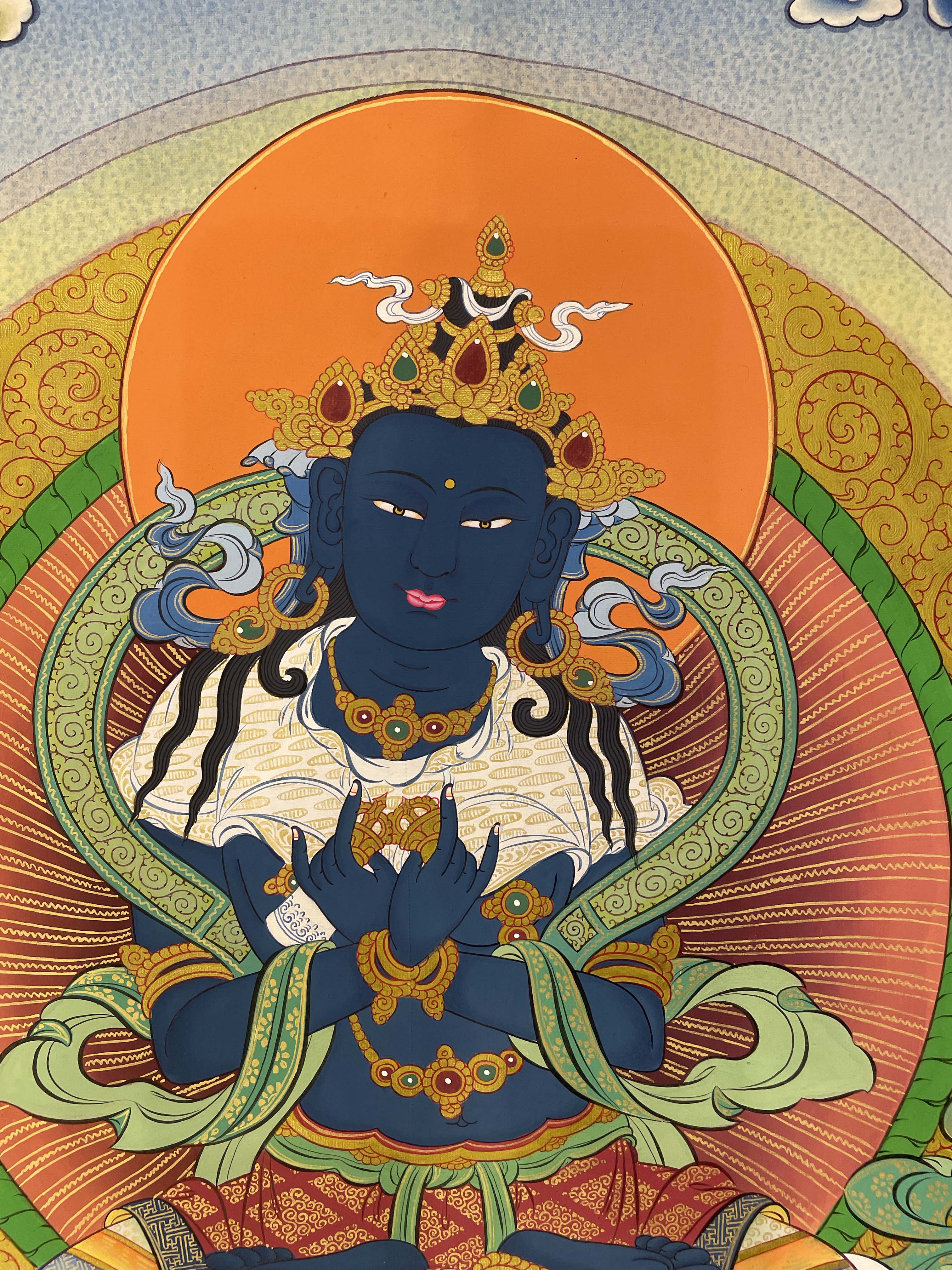 of Vajradhara Thangka,
of Vajradhara Thangka, 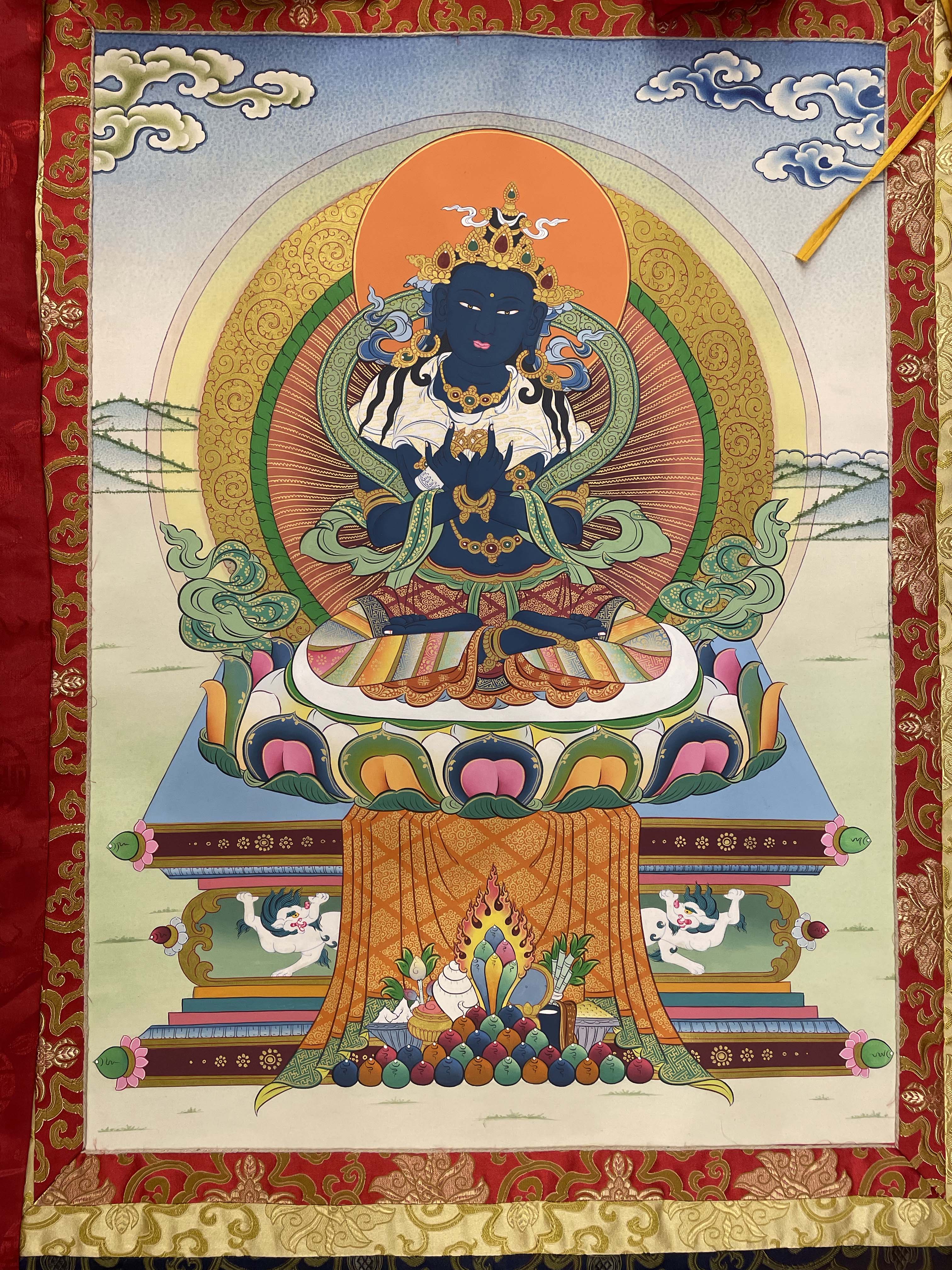 of Vajradhara Thangka,
of Vajradhara Thangka, 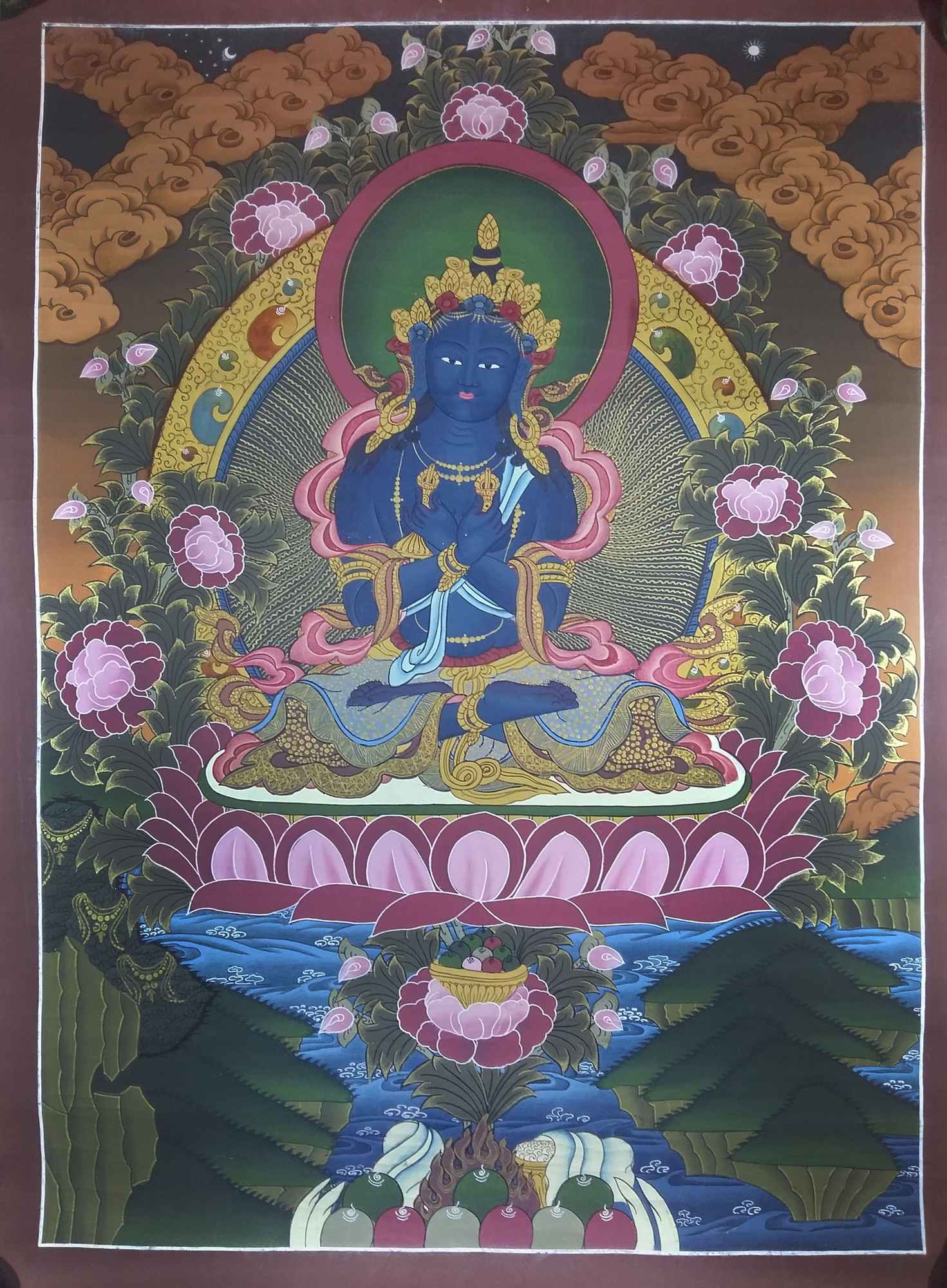

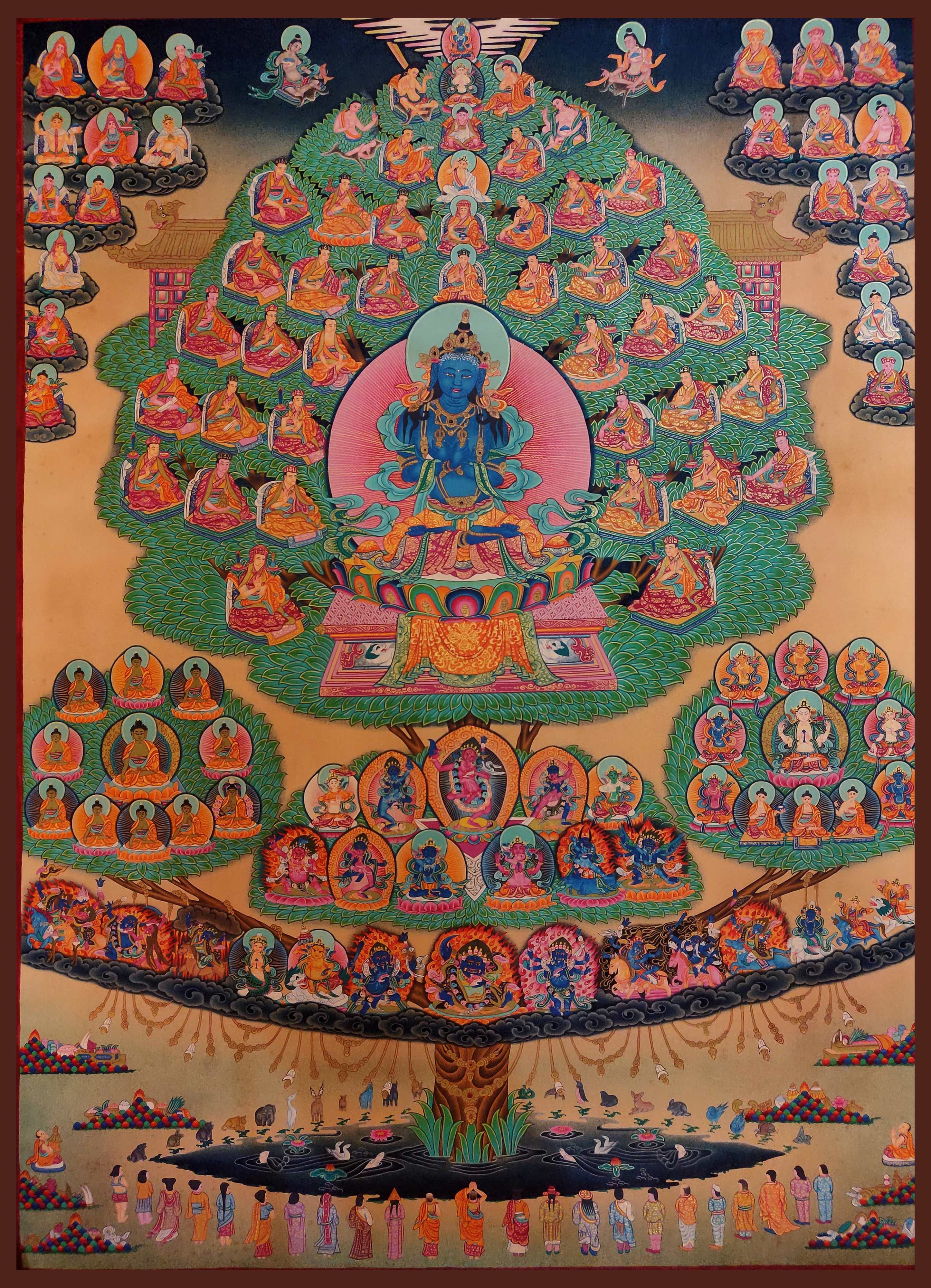 Real Gold,
Real Gold,  Real Gold,
Real Gold,  of Guhyasamaja High Quality Real Gold
of Guhyasamaja High Quality Real Gold 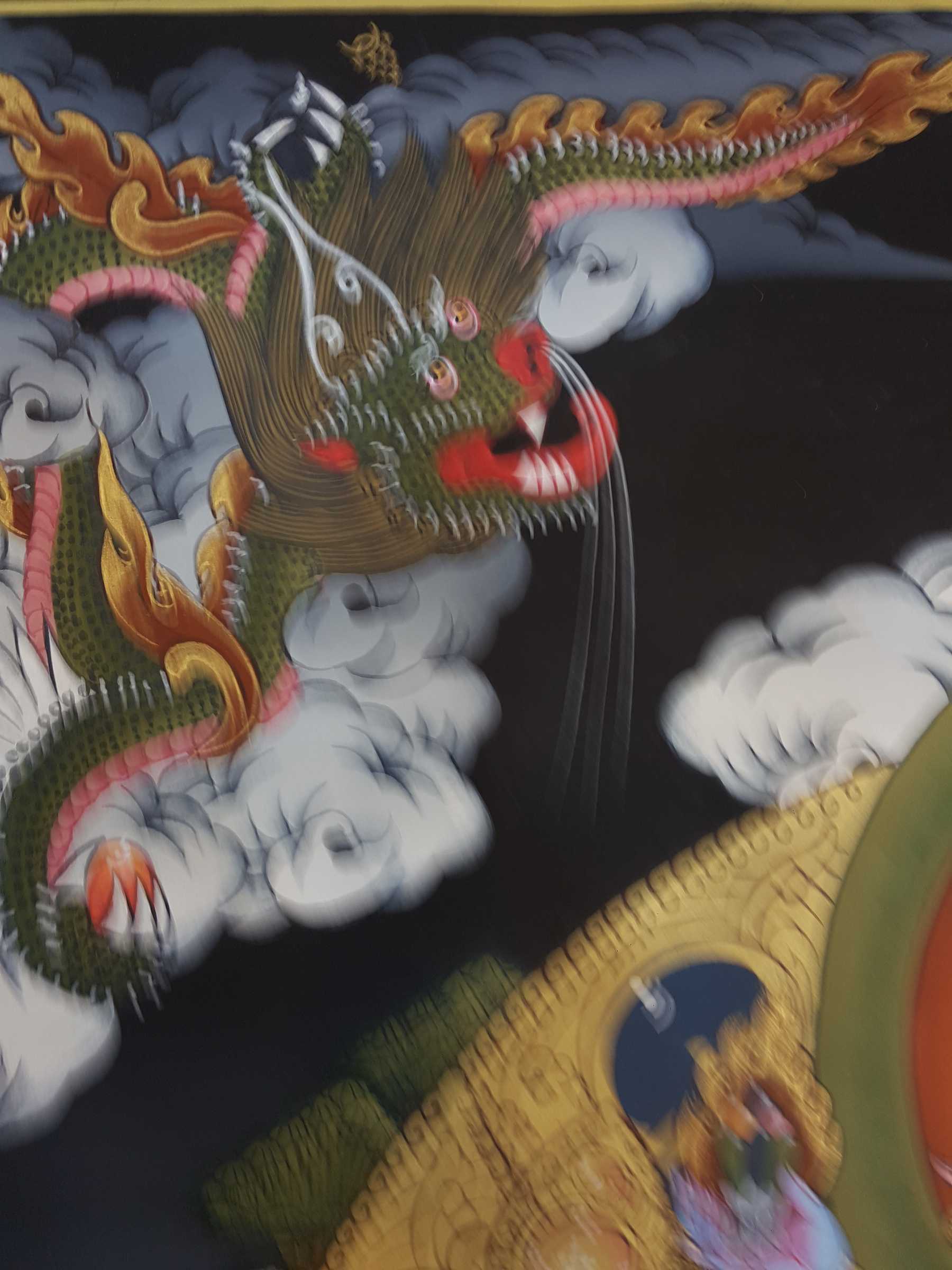 of Guhyasamaja High Quality Real Gold
of Guhyasamaja High Quality Real Gold